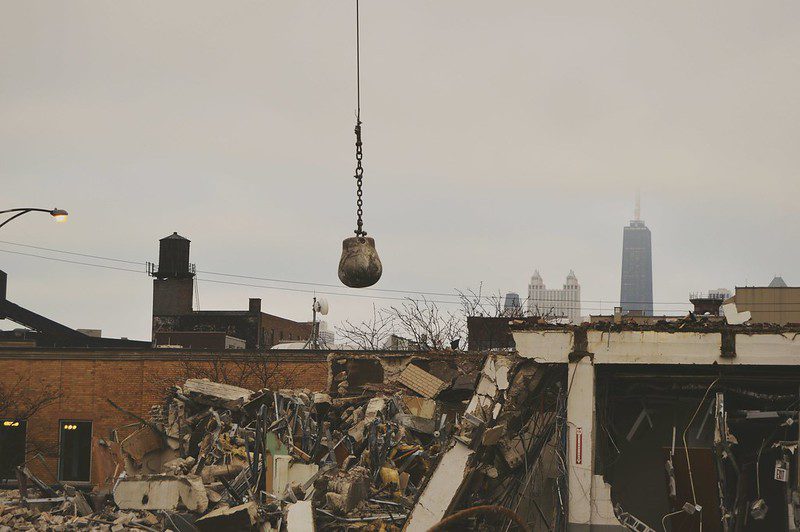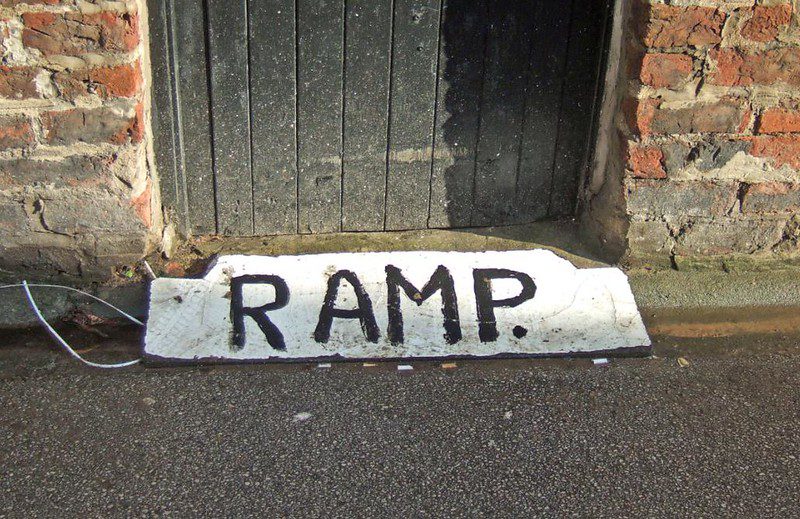
Wrecking Ball. Photo credit: avrell Dorsey Jr. via flickr, CC BY 2.0.
“Racism is a structure, not an event.” So argues Robin DiAngelo in her powerful book White Fragility. While racist acts do occur, she acknowledges, the real challenge is to dismantle “a complex, interconnected system” from which white Americans benefit no matter their individual attitudes or behavior. There is no stronger bulwark of racism than the segregated housing system that has long persisted in virtually every metropolitan area in the U.S. Consistent with other housing policy presented by the Trump administration, HUD is planning to further entrench policy in the past. HUD has proposed a new “affirmatively furthering fair housing” rule that would make it far more difficult for the agency or any other fair housing group to combat persisting patterns of discrimination and segregation in the nation’s housing markets.
The Fair Housing Act passed in 1968 requires recipients of federal housing and community development funds to take action that will identify the causes and consequences of discrimination and segregation in the nation’s housing markets and create the “truly balanced and integrated living patterns” that Walter Mondale, co-sponsor of the 1968 act, called for on the Senate floor. In other words, they are to affirmatively further fair housing.
But this obligation was virtually ignored before the Obama administration issued a rule in 2015 that provided clarity and muscle for compliance and enforcement. Key provisions included requiring recipients of federal funds to conduct a fair housing assessment to identify policies and practices that led to discriminatory and segregated outcomes, and then to implement programs that would not duplicate, but eradicate those outcomes. Local participation in the formulation and implementation of those plans was a key component of the 2015 rule.
In January 2018 HUD suspended this rule. In January of 2020 the agency issued a proposed rule that eliminates the affirmative planning and local participation requirements along with several other regulations in an effort to provide “clearer guidance to states and local governments to help them improve affordable housing choices in their community.”
“Housing choice” is the new mantra, and the reversal in policy is aptly captured by the change HUD proposes for its definition of AFFH. HUD currently defines AFFH as “taking meaningful actions that, taken together, address significant disparities in housing needs and in access to opportunity replacing segregated living patterns with truly integrated and balanced living patterns, transforming racially and ethnically concentrated areas of poverty into areas of opportunity, and fostering and maintaining compliance with civil rights and fair housing laws.” HUD now proposes a very simple definition of “advancing fair housing choice within the program participant’s control or influence.”
The proposed rule makes repeated reference to three primary goals, which are to increase the supply of affordable housing, enhance access to that housing, and improve housing conditions.
But affordable housing does not automatically translate into fair housing. Segregation results from a variety of practices and not just income differences across different groups. Steering by real estate agents, redlining by mortgage lenders and home insurance companies, discriminatory appraisals, and refusing to rent to families with housing vouchers are just some of the practices that perpetuate segregation. These practices can be identified by the fair housing assessments required under the previous rule. Increasing the supply of affordable housing will not make them go away.
The proposed rule calls for collection of data on a variety of housing characteristics including median home value and rent, cost burden, share of units lacking plumbing and kitchen facilities, vacancy rates, frequency of lead-based paints and poisoning, availability of housing accepting housing choice vouchers, and availability of housing accessible to persons with disabilities. However, no data collection with regard to racial or ethnic disparities will be required for these factors or in terms of treatment by real estate agents or mortgage lenders, proximity to good schools, or access to any other neighborhood amenities.
And yet, a wide range of disparity persists in today’s housing markets. Paired testing by a variety of public and private organizations has consistently demonstrated that when equally qualified white and non-white home seekers (families with similar incomes and wealth as well as housing preferences) visit real estate or rental agents they are often treated differently. The most recent national housing discrimination study conducted by the Urban Institute for HUD in 2012 found that in one out of every eight visits white home seekers were told about and shown more homes than were non-whites. In November 2019, Newsday reported on its three-year investigation revealing that almost half of all African American, 39 percent of Latino, and 19 percent of Asian home seekers encountered a range of discriminatory practices in their efforts to find housing on Long Island. A 2015 investigation by Rutgers University public policy professor Paul Jargowsky for The Century Foundation concluded that poor Black Americans were three times more likely to live in a poor neighborhood than poor white Americans. Yet as Solomon Greene of the Urban Institute and Shamus Roller of the National Law Project noted, HUD’s proposed new rule does not even mention racial segregation or racially concentrated areas of poverty—which the Fair Housing Act was designed to address.
HUD should unsuspend the 2015 rule, which, as the Poverty & Race Research Action Council concluded, “provided clarity and real teeth to the mandate and established a new robust framework for fair housing planning (the Assessment of Fair Housing) that yielded promising results from its early rollout.”
As for the proposed rule, HUD should simply drop it. That would advance the agency’s efforts to fulfill its mandate to dismantle the structure of housing discrimination, make fair housing a reality, and lead to the balanced living patterns envisioned when the Fair Housing Act was passed.





Hud has left its purpose for low-income housing. Racist tactics are in the proposal by this administration. Locally the city has the burden of providing housing for low- income people and although the county of the city receive more money from Hud the county won’t put any money in communities of depravities. Money is given to developers along with incentives to build maga developments. Developers build housing with no affordable housing with no requirements to build for the working class (whatever that mean).
They need to do more about changing the minor criminal laws to obtain public housing. 1st and for most fair housing laws and 2nd chance so that the people which low-income housing was designed for can get it. They want the government’s grants and money’s but not the people. I know 1st hand because i live in a shelter/motel 1701 Russell st the worker there only mainly care about 1 thing a pay check but finding people permanent housing is not on their minds i heard it’s a person that been in the shelter before here 5yrs. I have been on the city’s housing list since 2011 i am 65 on disability i recently got a project based voucher i went out and found a place Alcott place senior apartments and almost moved in while waiting for the city to inspect they denied me do to a misdemeanor i appealed waiting on their discussion if not the right 1 i will appeal again it’s a pandemic i need safe clean permanent housing ASAP